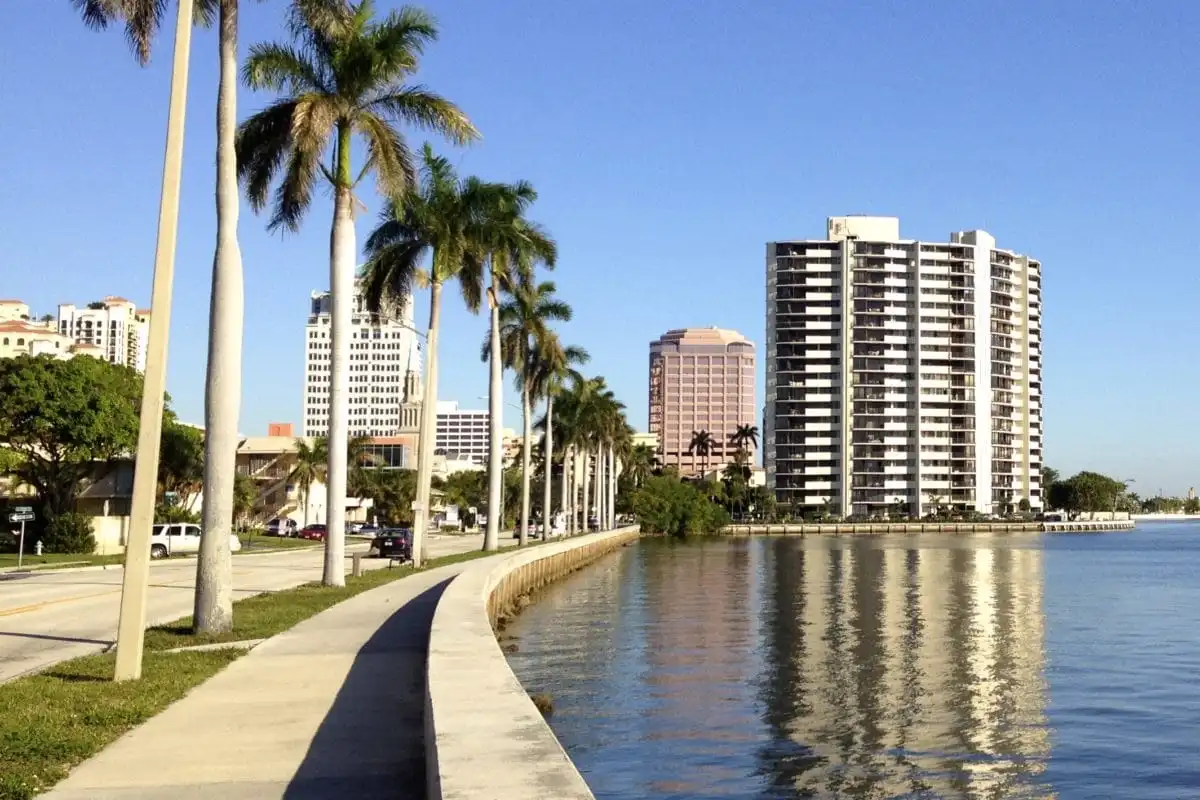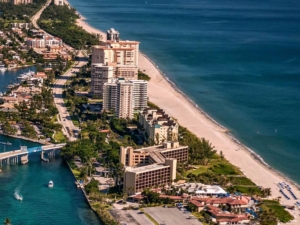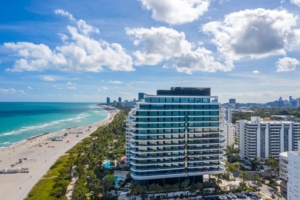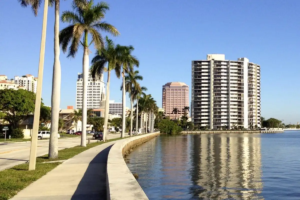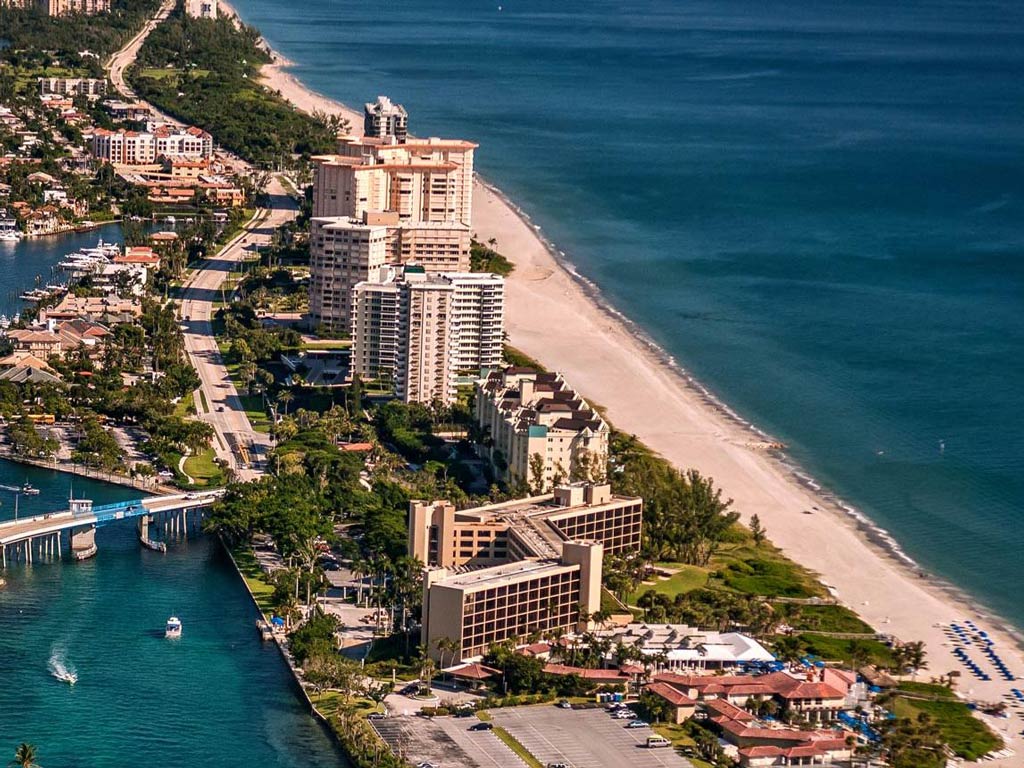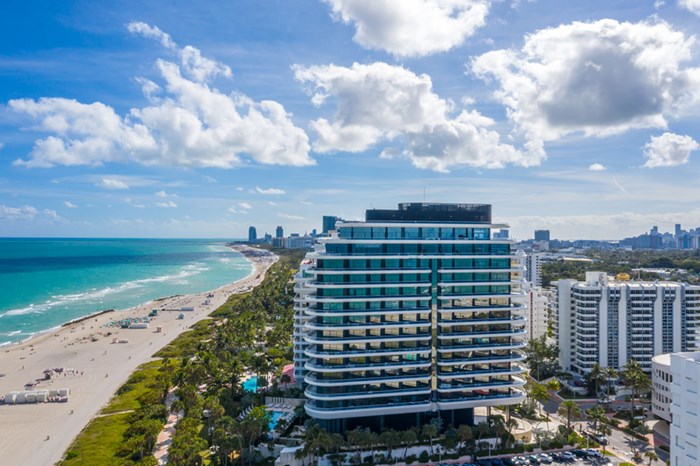Starwood Capital's $133M West Palm Beach Retail Sale Signals Booming South Florida Shopping Center Market
The South Florida retail landscape continues its remarkable transformation as institutional investors capitalize on one of the nation's most resilient commercial real estate markets. Barry Sternlicht's Starwood Capital Group recently completed a strategic divestiture, selling The Marketplace at the Outlets in West Palm Beach for $133.2 million to Atlanta-based investment giant Invesco, marking another significant transaction in the region's red-hot shopping center sector.
This deal underscores the tremendous investor confidence in South Florida's retail fundamentals, where vacancy rates have remained at historic lows of 3.5% for three consecutive quarters, significantly below the national average of 4.2%. The transaction, which closed with Invesco assuming an additional $79 million loan, represents more than just a single property sale—it's a testament to the enduring strength of well-positioned retail assets in America's fastest-growing metropolitan areas.
Strategic Investment Exit Delivers Strong Returns for Starwood Capital
The West Palm Beach transaction showcases Starwood Capital's disciplined investment approach and market timing expertise. Having acquired The Marketplace at the Outlets for $130 million in 2022, the Miami Beach-based firm achieved a modest but solid return while navigating a challenging interest rate environment that has compressed valuations across many commercial real estate sectors.
The 303,776-square-foot retail complex, spanning 27.6 acres at 1821 Palm Beach Lakes Boulevard, commanded $438 per square foot—a price point that reflects the premium investors place on grocery-anchored shopping centers with diverse tenant mixes. The property's anchor tenant, Whole Foods, provides the essential traffic driver that makes neighborhood shopping centers recession-resistant, while national retailers including Nordstrom Rack, Marshalls, T.J. Maxx, Ulta Beauty, Ross Dress for Less, and HomeGoods offer consumers the convenience and value proposition that keeps occupancy rates high.
Barry Sternlicht, who has structured investments with an asset value of over $200 billion throughout his 33-year career, continues to demonstrate his ability to identify opportunistic real estate investments across multiple asset classes. This latest transaction adds to Starwood Capital's extensive retail portfolio, which includes approximately 56 million square feet of retail properties across various markets.
South Florida's Retail Market Defies National Headwinds
While many U.S. retail markets struggle with elevated vacancy rates and declining foot traffic, South Florida stands as a remarkable exception. Recent market data shows retail vacancies increased only marginally from 3.0% to 3.2% year-over-year in the fourth quarter, while average asking rents rose from $36.07 to $36.73 per square foot, demonstrating the market's pricing power and tenant demand stability.
Several factors contribute to this exceptional performance. The region's continued population growth, driven by domestic migration from higher-tax states, creates sustained consumer demand. Additionally, South Florida's tourism economy provides an additional spending base that supports retail performance beyond local residents. The market's focus on grocery-anchored and necessity-based retail concepts has proven particularly resilient, as these property types maintain consistent performance regardless of economic cycles.
The development pipeline remains constrained, with limited new construction creating a supply-demand imbalance that benefits existing property owners. This scarcity premium has attracted institutional capital seeking stable, income-producing assets in markets with strong demographic tailwinds.
Major Players Drive Shopping Center Acquisition Activity
The Starwood-Invesco transaction represents just one example of the intense acquisition activity transforming South Florida's retail ownership landscape. Sophisticated investors recognize the long-term value proposition of well-located shopping centers in high-growth markets, leading to a series of notable transactions across the tri-county region.
Columbia, South Carolina-based Edens recently invested $51.2 million in a Davie shopping center, demonstrating confidence in the market despite the property's recent loss of Office Depot as a major tenant. This acquisition strategy reflects investors' belief in their ability to re-tenant and optimize underperforming assets in strong demographic markets.
Raanan Katz's RK Centers expanded its already substantial South Florida footprint by acquiring the Publix-anchored Shoppes at Monarch Lakes in Miramar for $16.4 million. RK Centers' continued investment in the market reflects the company's deep local knowledge and confidence in long-term retail demand fundamentals.
SK Realty Management's $30 million acquisition of Sawgrass Landing in Sunrise and Gazit Horizons' $35.4 million purchase of Galt Ocean Marketplace in Fort Lauderdale demonstrate how both domestic and international investors view South Florida retail as a compelling investment opportunity. Gazit Horizons, the U.S. arm of Israeli real estate firm Gazit Globe, brings global capital and expertise to the local market.
Outdoor Shopping Centers Lead Market Performance
The dominance of outdoor shopping centers in South Florida's retail market reflects both climate advantages and changing consumer preferences. Unlike enclosed malls, which face structural challenges from e-commerce competition and changing shopping habits, open-air retail centers offer the experiential shopping environment that modern consumers prefer.
These properties typically feature wider sidewalks, outdoor dining areas, and easier parking access—amenities that became even more valuable during the pandemic and continue to drive tenant and consumer preference. The format also allows for greater flexibility in tenant mix, enabling property owners to adapt to changing retail trends and incorporate emerging concepts.
The grocery-anchored model provides additional stability, as food shopping remains largely resistant to online disruption. When combined with complementary service-oriented tenants like fitness centers, medical offices, and personal care services, these centers create convenient one-stop destinations that generate consistent traffic throughout the week.
The success of this format has attracted both regional and national developers, though new supply remains limited due to land constraints and development costs. This supply limitation continues to support strong occupancy rates and rent growth across existing properties.
Market Outlook and Investment Implications
South Florida's retail market fundamentals suggest continued strength through 2025 and beyond. Market experts anticipate at least a 10% rise in real estate sales activity, driven by demographic shifts, economic factors, and lifestyle changes, which should translate into sustained demand for retail space.
The region's economic diversification beyond tourism—including growing technology, finance, and logistics sectors—provides multiple demand drivers for retail consumption. Additionally, the continued influx of high-net-worth individuals relocating from higher-tax jurisdictions brings significant spending power that supports premium retail concepts.
However, investors must remain selective in their approach. While the overall market performs well, individual properties' success depends heavily on location, tenant mix, and management quality. Properties with strong grocery anchors, diverse tenant rosters, and excellent accessibility will likely continue outperforming those lacking these attributes.
The interest rate environment remains a key variable, though South Florida's strong fundamentals provide some insulation from broader capital market volatility. Investors with long-term horizons and patient capital continue to find value in well-positioned retail assets, particularly those offering redevelopment or repositioning opportunities.
Market Insights
What drives South Florida's exceptionally low retail vacancy rates?
Multiple factors contribute to the region's tight retail market: sustained population growth from domestic migration, limited new construction creating supply constraints, strong tourist spending supporting retail demand, and strategic focus on necessity-based tenants like grocery stores and service providers that generate consistent traffic regardless of economic conditions.
Why do grocery-anchored shopping centers command premium valuations?
Grocery stores provide essential services that drive consistent weekly traffic, creating natural synergies with adjacent tenants. These centers typically maintain higher occupancy rates, more stable rent rolls, and greater recession resistance compared to fashion or entertainment-focused retail properties. The food shopping experience remains largely immune to e-commerce disruption, providing long-term tenant stability.
How does South Florida's retail market compare to national trends?
While the national retail vacancy rate averages 4.2%, South Florida maintains rates around 3.5% or lower. The region also experiences positive rent growth while many markets face declining rents. This outperformance reflects superior demographic trends, economic diversification, and strategic property positioning that differentiates South Florida from struggling retail markets.
What investment strategies work best in South Florida's retail market?
Successful investors focus on properties with strong grocery or service anchors, excellent visibility and accessibility, and diverse tenant mixes that reduce single-tenant risk. Value-add opportunities through re-tenanting or repositioning can generate superior returns, while long-term holds in prime locations benefit from sustained demographic growth and limited new supply.
What risks should retail investors consider in South Florida?
Key risks include hurricane exposure requiring appropriate insurance coverage, potential interest rate volatility affecting financing costs, competition from new development in select submarkets, and the need for continuous capital investment to maintain competitive positioning. Additionally, investors must carefully evaluate individual tenant credit quality and lease terms in an inflationary environment.

